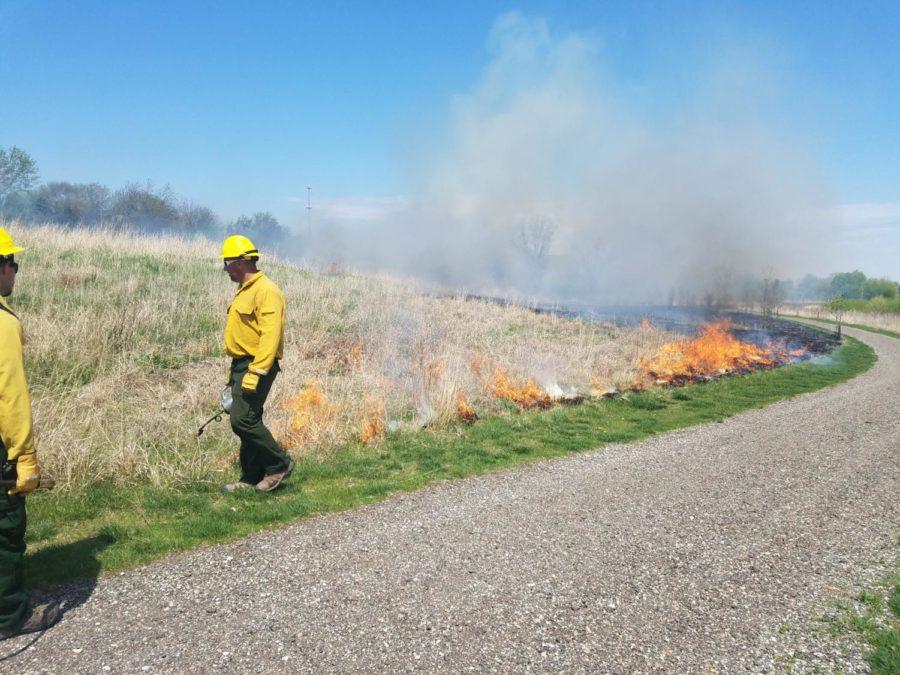Ames controlled fires conclude without complications
One Ames Parks and Recreation worker spreads the fire with a drip torch at Ada Hayden Historical Park.
May 8, 2018
Not many members of the public have seen government workers intentionally set fire to public land, but some did on Tuesday.
Trained members of the Ames Parks and Recreation Department burned natural prairie grounds in three areas across the city.
These burns can help restore nutrients to the soil, get rid of unwanted vegetation like weeds, improve local habitats and promote healthy plant growth.
Parks and Facilities Superintendent Joshua Thompson oversaw the burns and said it is important to maintain a three-to-five year rotation to ensure that wildlife have places of refuge and plant growth can be controlled.
“2013 was the last time these areas were burned,” says thompson. “Five years is typically the max amount of time that we wait between burns.”
With mild, stable winds, Thompson says the burns were easier to control and the recent rain made it hard for the fires to spread without the help of the trained professionals.
“Safety is the most important thing we take into consideration,” said Thompson. “Wind direction and speed and how much green grass there is between fields are considered when doing the burns.”
They do this with the goal of preventing fire and smoke from reaching residential areas. Thompson said conditions were as good as they get.
These types of burns typically happen during the spring and fall months, when weather conditions are most favorable and the burns won’t harm wildlife.
In winter and summer, the conditions are either too dry or wet, and burns would end up posing serious threats to some of the prairie wildlife.
Thompson says this burn was late in the season compared to most, but they were waiting for the best conditions. With wildlife like birds hatching in the coming weeks, he says that people should not expect any more burns.
“Different plants react differently at different times of the year,” said Thompson in regards to why they didn’t burn sooner. “Some plants germinate sooner than others, so we mix up our burns throughout the fall, early winter and late spring to make sure our plants have the best chance.”
He also noted that a week and a half ago, there was a lot of burning despite a lack of rain. That is why, he said, they waited to burn certain areas near residential areas until later when there was rain and green grass.
The burns started out at the corner of Mortensen Road and Ash Avenue at around 8:30 a.m. where trained officials were equipped with “drip torches,” which are torches that spray small amounts of gasoline and diesel to help spread the fire, and packs of water mounted on their backs to ensure that the fires did not spread to other areas.
This burn was much smaller than the rest and only lasted about 20 minutes.
From there, they went to Moore Memorial Park where the burns lasted until 11:00 a.m. Thompson says this burn took longer than the one before it because there was more to burn, and there was the added danger of nearby park goers and the proximity of a residential area.
The final and largest burn happened at Ada Hayden Historical Park starting at the southwest side. Burns in this park went until 2 p.m.
Thompson says these areas were picked because it had been nearly five years since their last burn, but he acknowledged that vegetation health in other areas can influence their decision when picking which areas to burn next.
With 37 parks to manage, the Ames Parks and Recreation Department does numerous burns throughout the year and the next ones are expected to happen in the fall.
Overall, Thompson says, the burns went very well with no complications or hiccups.
















